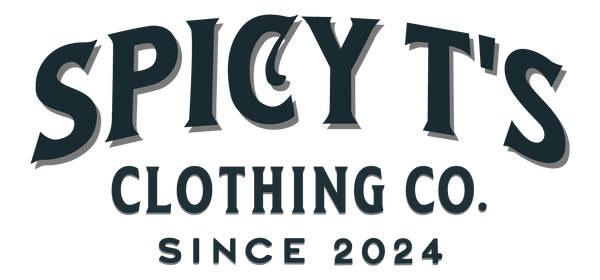
18 Popular Types of Illustration (With Uses & Examples)
Share
. Editorial Illustration
Used in: Magazines, newspapers, blogs
Purpose: Explains or enhances written content
Style: Often conceptual or metaphorical
🧠 Example: A surreal drawing in The New Yorker illustrating mental health
2. Fashion Illustration
Used in: Fashion design, runway previews, lookbooks
Purpose: Showcases clothing or fabric flow
Style: Stylized figures, elegant linework
👗 Example: Sketches used in designer pitch decks
3. Technical Illustration
Used in: Manuals, medical diagrams, architecture
Purpose: Explains how things work
Style: Accurate, labeled, often 3D or vector-based
🔧 Example: Car engine parts diagram
4. Concept Art
Used in: Games, films, animation, product design
Purpose: Visualize characters, settings, or objects before production
Style: Ranges from sketchy to ultra-detailed
🎮 Example: Fantasy landscape art for a video game
5. Comic Book Illustration
Used in: Comics, graphic novels, webtoons
Purpose: Tell stories with visual panels
Style: Stylized characters, dynamic poses, ink & color
💥 Example: Marvel/DC superhero comic spreads
6. Children’s Book Illustration
Used in: Picture books, storybooks
Purpose: Bring stories to life for young readers
Style: Soft, colorful, imaginative
📚 Example: "The Very Hungry Caterpillar" illustrations
7. Infographic Illustration
Used in: Business reports, websites, data visualizations
Purpose: Make complex data easy to understand
Style: Clean, simple icons and charts
📊 Example: Health tips illustrated in a flowchart format
8. Product Illustration
Used in: Catalogs, eCommerce, product packaging
Purpose: Show item use or features
Style: Detailed renderings or playful sketches
📦 Example: Illustrated shampoo bottle label with floral elements
9. Storyboard Illustration
Used in: Movies, animation, advertising
Purpose: Plan a sequence or commercial before filming
Style: Sketchy, frame-by-frame layouts
🎥 Example: Car ad storyboard showing speed scenes
10. Portrait Illustration
Used in: Editorials, social media, branding
Purpose: Capture a person’s likeness or emotion
Style: Realistic, stylized, or abstract
🖼 Example: Digital portraits of influencers or musicians
11. Caricature
Used in: Newspapers, events, social media
Purpose: Exaggerate features humorously
Style: Cartoonish, often bold lines
😂 Example: Political cartoons or wedding caricatures
12. Flat Illustration
Used in: Websites, branding, app onboarding screens
Purpose: Modern, clean storytelling
Style: 2D, simple shapes, no depth
📱 Example: Airbnb-style illustrations on a landing page
13. Vector Illustration
Used in: Logos, branding, posters, packaging
Purpose: Scalable design that looks sharp at any size
Style: Created in tools like Illustrator (AI, SVG)
📐 Example: Mascot logos, product labels, icon sets
14. Line Art
Used in: Tattoos, coloring books, minimalist design
Purpose: Clean and elegant outlines
Style: Black and white or simple color
✒️ Example: Continuous line drawings of faces or flowers
15. Isometric Illustration
Used in: UI/UX, tech visuals, infographics
Purpose: 3D-like view using parallel lines
Style: Geometric, grid-based
🏙 Example: Office layout or smart city illustrations
16. 3D Illustration
Used in: Games, product design, animations
Purpose: Realistic or stylized 3D objects
Style: Created in Blender, Cinema 4D, etc.
🔲 Example: 3D product mockups or AR illustrations
17. Mixed Media Illustration
Used in: Album art, posters, experimental projects
Purpose: Unique textures and depth
Style: Combines traditional + digital (e.g., watercolor + Photoshop)
🎨 Example: Album cover with paint, photos, and collage
18. Tattoo Illustration
Used in: Tattoo designs, body art stencils
Purpose: Visualize body artwork
Style: Dotwork, traditional, tribal, neo-traditional
🖋 Example: Rose linework or full-sleeve fantasy creature
Summary Chart
| Type | Common Use | Style |
|---|---|---|
| Editorial | Articles & blogs | Conceptual, metaphorical |
| Fashion | Clothing design | Stylized, elegant |
| Technical | Manuals, diagrams | Accurate, labeled |
| Concept Art | Games, films | Vivid, imaginative |
| Comic | Story panels | Dynamic, bold lines |
| Children's Book | Kids’ stories | Colorful, soft |
| Infographic | Data visuals | Simple, clean |
| Product | Packaging | Functional or playful |
| Portrait | Branding | Realistic or stylized |
| Line Art | Minimalist | Monoline, clean |
| Isometric | UI/Tech | 3D effect |
| 3D | AR, mockups | High-detail |
| Tattoo | Ink design | Stylized, traditional |
| Vector | Branding, logos | Scalable & clean |
🧠 Final Tip
Choose your illustration type based on:
-
The audience (e.g., kids vs. professionals)
-
The medium (digital, print, apparel, web)
-
The tone (fun, serious, luxurious, minimalist)
